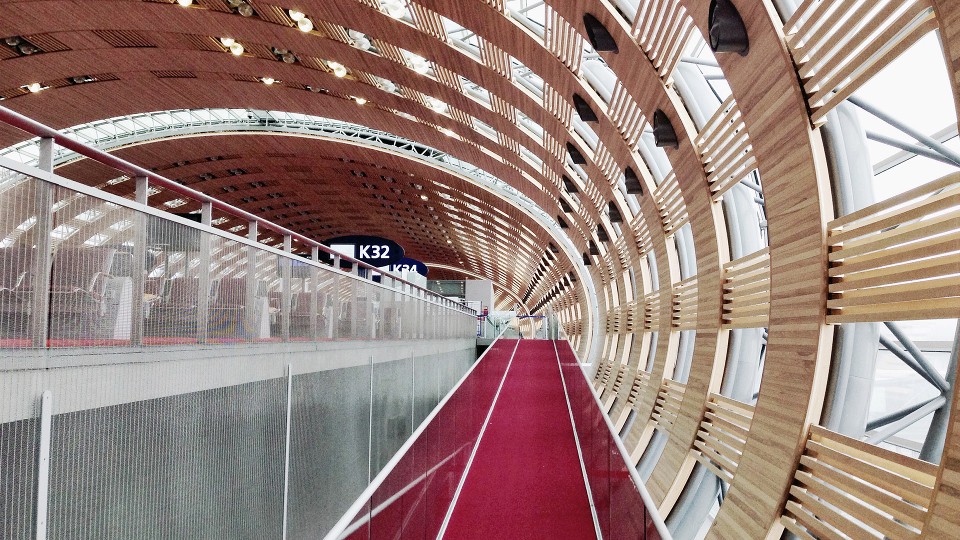
Aéroports de Paris
Aéroports de Paris uses Security Center Omnicast™ to enhance security for over 88 million annual passengers.

The company
ADP, founded in 1945, is most famous for its large international airports serving the Paris area: Roissy, Paris Charles de Gaulle and Orly. It also manages the 14 aerodromes in the Île-de France region and jointly manages many other airport sites in Mexico, Egypt, Cambodia, Belgium, Jordan, Algeria, Saudi Arabia and Guinea.
ADP accommodates nearly 88 million passengers every year and employs more than 11,000 people making it the second largest airport group in Europe for passenger traffic and the largest for freight and mail transport.
With 1,000 companies based around the 347 hectares of its premises, security is without a doubt top priority for ADP.
Between 55 and 60 people are employed at ADP to monitor the borders with the help of intricate video surveillance and security camera systems. 33 highly trained staff manage the surveillance of passenger flows at all times.
The challenge
The main task of ADP staff is border surveillance and security using tools like video surveillance. Monitoring a vast area and providing accurate real-time data for security monitoring is the biggest challenge for the ADP surveillance team.
The security perimeter includes everything related to the protection of the aircraft in particular against terrorist attacks.
With so many millions of passengers travelling through ADP each year and with such a vast perimeter to monitor, safety is unquestionably one of the main priorities. ADP's primary objective is to ensure the security of everyone by monitoring passengers in the continued fight against terrorism. This requires top of the range video security camera systems.
The solution
Sony solution
Sony's solution shone in three key areas. The first was thanks to the outstanding image quality, both at day and night, in any season, and in any light conditions. The second related to backlighting: a camera in an airport terminal must portray the traffic inside, as well as the people outside. Finally, the third area offered a seamless integration with the Genetec software.
"This is reassuring and presents an enormous advantage for Sony over its competitors", claims Pierre-François Verbecque. "Because ADP had worked with Genetec for a number of years, we couldn't change the software and monitoring elements; instead, we had to integrate our cameras into the existing system."
"The Sony SNC-DH140T camera has the technology to respond to these requirements, and goes even further in terms of managing backlighting and contrasts, without taking risks, so we can see people inside the building while observing what's happening outside", states the sales manager.
Genetec Omnicast is an open software that supports addition of new cameras to the ADP network with ease. With the simple addition of servers to the existing security camera systems, Sony cameras were easily added to the global surveillance network. At ADP's global surveillance center, the server managing Satellite 4 is interconnected to the other terminals' servers. In this way, the Sony cameras are connected to the other existing cameras, which are analog and have decoders.
"The image quality is on a completely different level. We offer HD whereas the definition of the images from basic analog cameras is standard. This allows us to analyze images in higher quality with precision making it easier to identify people involved in incidents", explains Pierre-François Verbecque. "As for the system, it's all homogeneous and set up so that it is completely transparent for the people in the surveillance center."
The camera's pixel matrix exceeds that of SD sensors, which produces an unprecedented image quality and offers a much broader field of vision. Moreover, CMOS sensors use a progressive scanning system which eliminates blurring and fluttering effects. The images can then be transmitted via a network compatible with various formats. In addition, to obtain optimum results and flexibility, Sony's HD video surveillance solutions are compatible with H.264, MPEG-4 and JPEG video compression formats.
Why Sony was selected
"It was a public invitation to tender, so the bidders were free to present the products they thought best. However, because our approach was not to test IP cameras against each other but to find the camera that best suited our requirements, we asked each bidder to present just one fixed IP camera each", explains Thierry Morgenstern, Head of Engineering and Architecture.
"We took a pragmatic and cross-company approach in selecting the IP camera, after close consultation with the Head of IT. We compiled an analysis report of the tests which took into account all of our selection criteria and allowed us to group the entire selection of cameras. Because the testing was done across the company, we were able to increase the number of experts involved in the process and consolidate the results. Initial feedback from the new cameras is excellent and the users are particularly aware of the improved quality of the new digital images."
"Our highly trained facilitators were selected to install 600 Sony SNC-DH140T cameras in the new building," explains Pierre-François Verbecque, Sales Manager for France at Sony.
"Also, with the ADP project focusing on indoor and anti-vandalism cameras, we were in a good position to offer the right product at the right time. Sony offers a varied catalog of analog and IP cameras which met the many needs of the various Paris airport services."